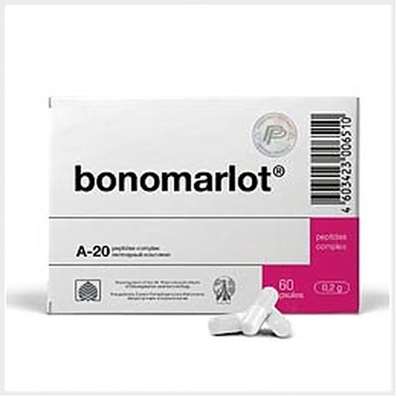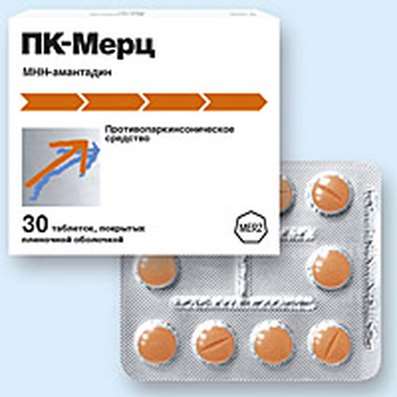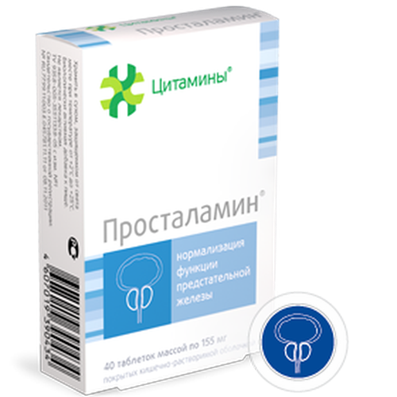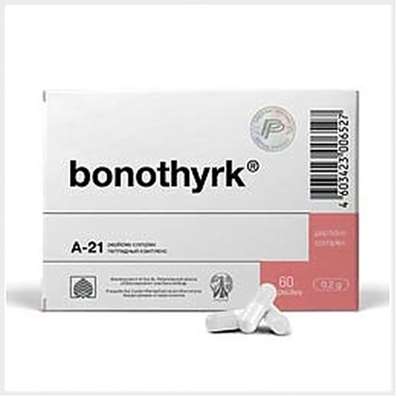Instruction for use: Maltofer
I want this, give me price
Dosage form: Drops for oral administration; Solution for intramuscular injection; Solution for oral administration; Syrup; Chewing tablets
Active substance: erri (III) hydroxydum polymaltosatum
ATX
B03AB05 Iron polyisomaltozate
Pharmacological groups
Iron preparation [Macro and trace elements]
Iron preparation [Stimulators of hemopoiesis]
The nosological classification (ICD-10)
D50 Iron deficiency anemia: Iron deficiency in food; Anemia due to violations of hemoglobin synthesis and iron metabolism; Anemia of iron deficiency; Iron / folic deficiency anemia; Iron deficiency anemia
D63.0 Anemia in neoplasm: Anemia in chronic diseases; Anemia due to radiation damage; Radiation anemia; Anemia in patients with solid tumors; Pernicious anemia
E46 Protein-energy insufficiency, unspecified: Defective food; Unbalanced nutrition; Period of intensive growth; Period of intensive growth and development; Oral nutrition; Alimentary dystrophy; Alimentary-infectious dystrophy; Protein deficiency; Protein fasting; Protein-caloric insufficiency; Protein-energy insufficiency; Feeding preterm infants; Pronounced protein deficiency; Exercising preterm infants; Hypotrophy; Hypotrophy in children; Protein Deficiency; Dystrophy; Neonatal dystrophy; Additional parenteral nutrition; An additional source of amino acids; An additional source of essential amino acids; Probe or oral nutrition; Probe food; Probe enteral feeding; Modified protein metabolism; Violation of protein anabolism; Violation of protein metabolism; Violations of protein metabolism; Lack of amino acids; Insufficient protein supply; Insufficient amino acids; Insufficiency of food protein; Insufficiency of nutrition during the period of intensive growth; Low protein content in the diet; Normalization of violations of the amino acid balance
E61.1 Insufficiency of iron: Insufficient food intake of iron; Iron deficiency; Iron deficiency in women during pregnancy; Deficiency of iron and folic acid in pregnancy; Iron deficiency after surgery; Latent iron deficiency; Lack of iron during pregnancy and lactation; Inadequate intake of iron from food; Increased need for iron; Increased need for iron during menstruation; Disturbances of iron absorption from the digestive tract; Severe iron deficiency
E61.7 Insufficiency of many nutritional elements: Absolute or relative lack of vitamins and minerals; Vitamin deficiency and lack of minerals; Restoration of the body's energy status; Hypovitaminosis and mineral deficiency; Hypovitaminosis and / or deficiency of minerals and microelements; Deficiency of macroelements; Dystrophy alimentary; An additional source of mineral substances; An additional source of mineral substances and vitamins; Lack of macroelements; Insufficient intake of minerals; Insufficiency of minerals; Insufficiency of mineral salts in the period of convalescence; Defective food; Unbalanced nutrition; Period of intensive growth; Period of intensive growth and development; Oral nutrition; Insufficiency of nutrition during the period of intensive growth
O25 Malnutrition in pregnancy: Hypovitaminosis during pregnancy; Deficiency of vitamins and minerals in pregnancy; Deficiency of iron and folic acid in pregnancy; Iron deficiency in women during pregnancy; Iodine deficiency in pregnancy; Iodine deficiency in lactating women; Calcium deficiency in the mother's body; Calcium deficiency in pregnant women; Mineral deficiency during pregnancy; An additional source of folic acid during pregnancy; Correction of calcium metabolism disorders during pregnancy; Lack of iron during pregnancy and lactation; Pregnancy Period; Breastfeeding period; Increased need for vitamin B1 in pregnancy
O26.9 Pregnancy-related condition, unspecified: Gestosis; Pregnancy Pregnancy; Gestosis; Psychological problems in pregnancy; Stretch marks after pregnancy; Condition of hair after pregnancy; Condition of nails after pregnancy; Convulsions with gestosis
R54 Age-related disease: External signs of aging; Age-related eye disease; Age-related visual impairment; Age-related vascular disease; Age constipation; Age-related changes in visual acuity; Age-related changes in the brain involutional; Age-related disorders; Age-related hearing loss; gerontological practice; senile dementia; Deficiency of calcium and vitamin D3 in the elderly; cerebral vascular disease and age-related; involutionary depression; involutional depression; Correction of metabolism in middle and old age; Malnutrition in elderly and senile age.; senile dementia; senile dementia; senile depression; senile colpites; senile psychosis; Syndrome of age involution; Hearing loss age; Aging; Brain Aging; The aging of the organism; senile dementia; senium; Senile involutional psychosis; senile psychosis; Memory impairment in elderly patients; Conduct disorders in the elderly
Z72.4 Unacceptable diet and bad habits in nutrition: Inadequate nutrition; Irregular nutrition; Unbalanced diets; Dyspepsia due to unusual food or overeating; Long-term dietotherapy; Prolonged or low-calorie diets; Gastrointestinal disorders due to a violation of diet; Binge eating; Food poisoning; Errors in the diet; Compliance with diets; Compliance with a strict diet; Special diets
Composition
chewing Tablets - 1 tab.
active substance: Iron (III) hydroxide polymaltosate 357 mg
(Equivalent to 100 mg of iron)
Auxiliary substances: dextrates - 232 mg; Macrogol 6000 - 37 mg; Talcum purified - 21 mg; Sodium cyclamate - 9 mg; Vanillin - 2.9 mg; Cocoa powder - 29 mg; Chocolate flavoring - 0.6 mg; MCC - up to 730 mg
Description
Tablets: round flat, brown with impregnations of white color, with a picture.
Pharmachologic effect
Mode of action - Replenishing the deficiency of iron.
Pharmacodynamics
In iron (III), the polymethyltosate hydroxide multinucleated iron (III) hydroxide is surrounded from the outside by a number of covalently bound polymaltosate molecules, which gives a total average molecular weight of approximately 50 kDa. The structure of the multinucleated core of iron (III) hydroxide of polymaltose is similar to the structure of the core of the ferritin protein, the physiological depot of iron. Iron (III) hydroxide polymaltose is stable and under physiological conditions does not emit a large number of iron ions. Due to the size, the degree of diffusion of iron (III) polymethyltosate hydroxide through the mucosa is approximately 40 times less than that of the iron-hexahedral complex (II). Iron from iron (III) hydroxide polymaltozate is actively absorbed in the intestine. The effectiveness of the preparation Maltofer® for the normalization of hemoglobin content and iron depot replacement has been demonstrated in numerous randomized controlled clinical trials using placebo control or an active comparator in adults and children with different iron depot status.
Pharmacokinetics
Suction. Iron from iron (III) hydroxide polymaltose is absorbed in accordance with the controlled mechanism. The increase in serum iron content after administration of the drug does not correlate with total iron absorption, measured as incorporation into hemoglobin (Hb). Studies with a labeled radioisotope of iron (III) hydroxide with polymaltozate revealed a strong correlation between the inclusion of iron in erythrocytes and the iron content throughout the body. The maximum activity of iron absorption from iron (III) hydroxide polymaltose is observed in the duodenum and small intestine. As in the case of other oral iron preparations, the relative absorption of iron from iron (III), the polymethyltosate hydroxide, defined as incorporation into hemoglobin, decreases with increasing doses of iron. In addition, a correlation was observed between the severity of iron deficiency (in particular serum ferritin concentration) and the relative amount of absorbed iron (ie, the more iron deficiency, the better the relative absorption). In patients with anemia, absorption of iron from iron (III), polymethyltosate hydroxide, in contrast to iron salts, increased in the presence of food.
Distribution. Distribution of iron from iron (III) hydroxide of polymaltosate after absorption was studied in a study using the technique of double isotopes (55Fe and 59Fe).
Biotransformation. The absorbed iron binds to transferrin and is used to synthesize hemoglobin in the bone marrow or is stored mainly in the liver, where it binds to ferritin.
Excretion. Non-sucked iron is excreted by the intestine (with feces).
Indication of the drug Maltofer
Treatment of iron deficiency without anemia (latent iron deficiency) and clinically pronounced iron deficiency anemia;
Increased need for iron during pregnancy and during breastfeeding, blood donation, intensive growth, vegetarianism and the elderly.
Contraindications
Established hypersensitivity to iron (III) hydroxide polymaltosate or to any auxiliary substance;
Overload with iron (eg hemosiderosis, hemochromatosis);
Impairment of iron utilization (eg lead anemia, sidero-achestic anemia, thalassemia);
Anemia not related to iron deficiency (eg hemolytic anemia or megaloblastic anemia caused by a lack of vitamin B12);
Children under 12 years of age (due to the need to prescribe small doses in this age group, it is recommended to use the preparation Maltofer®, drops for ingestion, 50 mg / ml, or Maltofer®, syrup, 10 mg / ml).
Application of pregnancy and breastfeeding
To date, there have been no reports of serious adverse reactions after taking Maltofer® inward at therapeutic doses in the treatment of anemia during pregnancy. The data obtained from animal studies showed no danger to the fetus and the mother. Data of clinical studies on the use of the preparation Maltofer® in the first trimester of pregnancy are absent. In studies conducted in pregnant women after the end of the first trimester of pregnancy, no undesirable effects of the preparation Maltofer® on mothers and / or newborns were found. In this regard, adverse effects on the fetus when using the drug Maltofer® is unlikely.
Breast milk of a woman contains iron, associated with lactoferrin. The amount of iron that passes from iron (III) hydroxide polymaltozate to breast milk is unknown. It is unlikely that the use of the drug Maltofer® by breast-feeding women can lead to undesirable effects in the child. As a precaution, women of childbearing age and during pregnancy and breastfeeding should take the drug Maltofer® only after consulting a doctor. It is recommended that the benefit / risk ratio be evaluated.
Side effects
The safety and tolerability of the preparation of Maltofer® has been evaluated in a variety of clinical studies. The main undesirable drug reactions (NLR) noted in these studies occurred in the following three classes of systems and organs (frequency was defined as: very often ≥1 / 10, often ≥1 / 100, <1/10, infrequently ≥ 1/1000, <1/100).
From the nervous system: infrequently - a headache.
From the digestive tract: very often - a change in the color of feces; Often - diarrhea, nausea, dyspepsia; Infrequently - vomiting, constipation, abdominal pain, discoloration of tooth enamel2.
From the skin and subcutaneous tissues: infrequently - rash (including exanthema), itching.
1 Often recorded as an undesirable phenomenon (in 23% of patients), this is a well-known NLR for oral iron preparations
2 An adverse event was reported in 0.6% of patients, and this is a well-known NLR for oral iron preparations.
Spontaneous post-marketing reports on NLR. No additional NLRs were noted.
Deviations of laboratory indicators. No data available.
Interaction
The interaction of iron (III) hydroxide of polymaltosate with tetracycline or aluminum hydroxide was studied. A significant reduction in tetracycline absorption was not observed. The concentration of tetracycline in the blood plasma did not drop below the effective level. Absorption of iron from iron (III) hydroxide polymaltozate did not decrease under the influence of aluminum hydroxide or tetracycline. Thus, iron (III) hydroxide polymaltozate can be used simultaneously with tetracycline and other phenolic compounds, as well as with aluminum hydroxide.
In studies in rats using tetracycline, aluminum hydroxide, acetylsalicylic acid, sulfasalazine, calcium carbonate, calcium acetate and calcium phosphate in combination with vitamin D3, bromazepam, magnesium aspartate, D-penicillamine, methyldopa, paracetamol and auranofin, no interaction with iron (Iii) hydroxide with polymaltose.
The interaction of iron (III) hydroxide of polymaltosate with food components such as phytic acid, oxalic acid, tannin, sodium alginate, choline and choline salts, vitamin A, vitamin D3 and vitamin E, soybean oil and soybean flour has also not been observed. These results indicate that iron (III) hydroxide polymaltose can be taken during or immediately after ingestion.
Admission of the drug does not affect the results of the determination of hidden blood (with selective determination of hemoglobin), therefore, it is not necessary to interrupt treatment.
It is necessary to avoid the simultaneous use of parenteral and oral iron preparations, since the absorption of iron taken orally slows down.
Dosing and Administration
Inside.
The daily dose can be divided into several doses or taken at a time. Maltofer® should be taken during or immediately after meals. Maltofer®, chewable tablets, 100 mg, can be chewed or swallowed whole. The daily dose of the drug depends on the degree of iron deficiency (see table).
Daily doses of the preparation Maltofer®
| Category of patients | Treatment of iron deficiency anemia | Treatment of iron deficiency without anemia | Increased need for iron |
| Children over 12 years of age, adults, lactating women | 1-3 tab. (100-300 mg of iron) | 1 tab. (50-100 mg of iron) | - * |
| Pregnant women | 2-3 tab. (200-300 mg of iron) | 1 tab. (100 mg of iron) | 1 tab. (100 mg of iron) |
* Due to the need to prescribe small doses for these indications, it is recommended to use the preparation Maltofer® drops for ingestion, 50 mg / ml, or Maltofer® syrup, 10 mg / ml.
Treatment of iron deficiency anemia in children older than 12 years and adults. From 100 to 300 mg / day of iron (1-3 tablets) for 3-5 months before the normalization of Hb content. After this, treatment should be continued for several weeks at the dose described for the case of iron deficiency without anemia, in order to replenish iron stores.
Treatment of iron deficiency anemia during pregnancy. From 200 to 300 mg / day of iron (2-3 tablets) until the normal content of Hb is reached. After this treatment should be continued at least until the end of pregnancy in a dose described for the case of iron deficiency without anemia, in order to replenish iron stores and meet the increased requirements for iron in connection with pregnancy.
Treatment and prevention of iron deficiency without anemia in children over 12 years of age and adults. At 100 mg / day (1 table) for 1-2 months. If a smaller dose is required for prevention, it is possible to use Maltofer® preparations, drops for ingestion, 50 mg / ml, or Maltofer®, syrup, 10 mg / ml.
Use in children. Maltofer®, chewable tablets, 100 mg, are contraindicated for children aged 12 years and under. The dosage form and concentration of the preparations Maltofer®, drops for ingestion, 50 mg / ml, and Maltofer®, syrup, 10 mg / ml, are better suited for taking the recommended dose in this age group.
Overdose
In case of an overdose of the preparation, Maltofer® iron overload or intoxication is unlikely, which is due to the low toxicity of iron (III), polymethyltosate hydroxide and controlled iron uptake. No cases of unintentional poisoning with a lethal outcome were reported.
Special instruction
It is assumed that taking Maltofer® should not affect the daily insulin requirement in patients with diabetes mellitus. 1 chewable tablet contains 0.04 XE.
Anemia can be caused by infectious diseases or malignant neoplasms. Since iron can only be taken after the root cause of the disease has been eliminated, the relationship between benefit and risk of treatment should be determined.
During treatment with the preparation Maltofer®, dark staining of the stool can be noted, however this has no clinical significance.
Influence on the ability to drive vehicles and work with machinery. No data available. It is unlikely that the preparation of Maltofer® influences the ability to drive vehicles, mechanisms.
Release Form
Tablets are chewable, 100 mg. In a blister of aluminum foil, laminated PE, 10 pcs. 1 or 3 bl. In a cardboard box.
Manufacturer
Vifor C.A. Ruth de Moncor, 10, SN-1752, Villars-sur-Glane, Switzerland.
The legal entity in whose name the registration certificate / company issuing the quality control certificate is issued: Vifor (International) Inc. Rehenstrasse 37, SN-9014 Art. Gallen, Switzerland.
The organization that accepts consumer claims: OOO Takeda Pharmaceuticals, 119048, Moscow
Conditions of supply of pharmacies
On prescription.
Storage conditions of the drug Maltofer
In the dark place at a temperature of no higher than 25 ° C.
Keep out of the reach of children.
Shelf life of the drug Maltofer
5 years.
Do not use after the expiry date printed on the package.

 Cart
Cart





